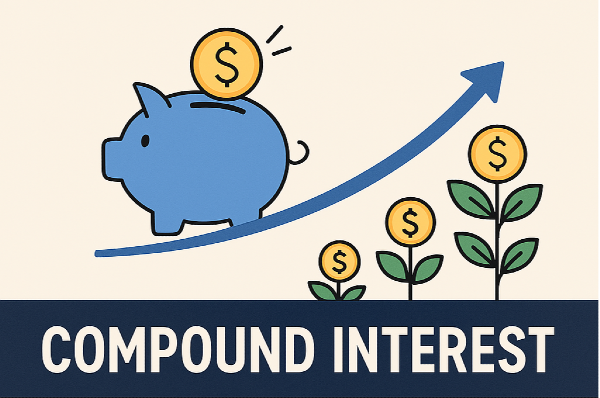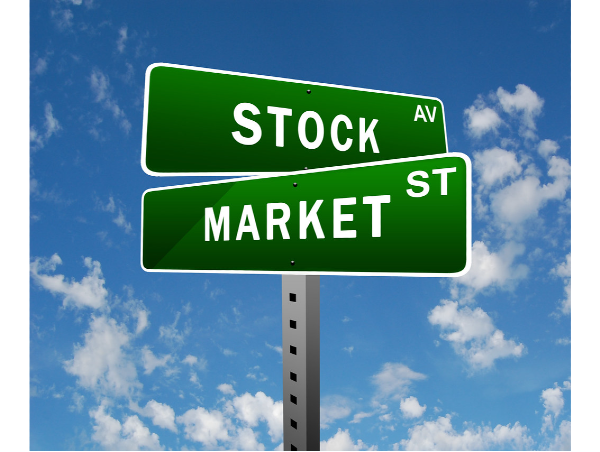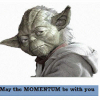What if your money could grow not only on the dollars you invest today, but also on the interest those dollars generate tomorrow? That’s the magic of compound interest. Instead of earning interest on your original principal alone, compound interest reinvests each new interest payment back into the principal. Over time, this “interest on interest” effect can dramatically accelerate growth, turning modest savings into substantial wealth.
Compound interest stands in contrast to simple interest, where you earn interest only on the original amount you put in. Understanding how and why compounding works is crucial for savers, investors, and borrowers alike. It influences decisions about retirement accounts, certificates of deposit, mortgages, and even credit cards. Let’s dive into the nuts and bolts of this powerful financial concept.
What Is Simple Interest?
Simple interest calculates earnings based solely on the original amount you invest, known as the principal. Each period—whether yearly or monthly—you receive the same dollar amount in interest.
- Simple interest formula: ( I = P \times r \times t )
- P is the principal, r is the annual interest rate, t is time in years
Because simple interest does not reinvest prior interest, your growth remains linear. If you invest $1,000 at 5 percent simple interest for five years, you’ll earn $50 each year, totaling $250 in interest. The balance after five years would be $1,250, unchanged by additional earning on the interest itself.
How Compound Interest Differs
Compound interest adds earned interest back into your principal so that future interest calculations include previously earned amounts. Every compounding period boosts the base upon which future interest accrues.
- Compounding period can be annual, semiannual, quarterly, monthly, or daily
- The interest credited in one period becomes part of the principal for the next
- Growth curve follows an exponential trajectory rather than a straight line
By reinvesting each interest payout, compound interest allows your savings to snowball. The more frequently interest is compounded, the greater the long-term effect.
The Compound Interest Formula
Mathematically, compound interest is captured by the equation:
[
A = P \left(1 + \frac{r}{n}\right)^{n t}
]
- A represents the accumulated amount after t years
- P is the original principal
- r is the annual nominal interest rate (as a decimal)
- n is the number of compounding periods per year
This formula shows how rate, frequency, and time interact. A higher rate or more compounding periods (n) increases the exponent’s effect. Most financial institutions advertise annual percentage yields (APY) to reflect these compounding boosts.
Growth Comparison: Simple vs Compound
Below is a five-year example comparing simple interest to annual compounding on a $1,000 principal at 5 percent.
| Year |
Simple Interest Balance |
Compound Interest Balance |
| 0 |
1000.00 |
1000.00 |
| 1 |
1050.00 |
1050.00 |
| 2 |
1100.00 |
1102.50 |
| 3 |
1150.00 |
1157.63 |
| 4 |
1200.00 |
1215.51 |
| 5 |
1250.00 |
1276.28 |
In this simple illustration, compounding delivers $26.28 more over five years. That gap widens with higher rates, larger principals, or longer time horizons.
Impact of Compounding Frequency
Increasing the number of compounding periods per year yields even greater returns. In reality, many accounts compound more than once annually.
| Frequency |
n (periods/year) |
Balance after 5 Years |
| Annual |
1 |
$1,276.28 |
| Semiannual |
2 |
$1,280.08 |
| Quarterly |
4 |
$1,283.36 |
| Monthly |
12 |
$1,284.00 |
| Daily (365) |
365 |
$1,284.03 |
Shifting from annual to daily compounding adds about $7.75 extra over five years on a $1,000 principal at 5 percent. The law of diminishing returns applies: gains shrink as compounding gets very frequent.
Real-World Applications
Compound interest isn’t just a theoretical construct. It powers a broad range of financial products and decisions:
- High-yield savings accounts that credit interest monthly or daily
- Certificates of deposit (CDs) with locked-in rates and compounding terms
- Retirement accounts like 401(k)s and IRAs that benefit from decades of growth
- Reinvested dividends in stock portfolios that mimic compounding
- Certain loans and mortgages that calculate interest daily or monthly
Savvy investors harness compounding by starting early and choosing accounts with favorable compounding frequencies.
Benefits of Compound Interest
Why does compound interest matter so much? Its strengths include:
- Exponential growth potential
- Time as a force multiplier—longer durations yield disproportionately larger balances
- Predictability once the rate and compounding frequency are known
- Encouragement to save consistently and reinvest earnings
Albert Einstein reportedly called compound interest “the eighth wonder of the world,” highlighting that those who understand it can achieve extraordinary financial outcomes.
Strategies to Maximize Growth
To put compound interest to work in your favor, consider these tactics:
- Start saving or investing as early as possible to leverage time
- Automate contributions so each paycheck adds to principal
- Select accounts with frequent compounding intervals
- Reinvest all dividends, interest, and capital gains without withdrawals
- Shop for competitive rates and lock them in when possible
While you can’t control market rates, you can optimize the structure and discipline around your savings plan.
Step-by-Step Calculation Guide
Calculating compound interest by hand may seem daunting, but it follows these simple steps:
- Convert the annual rate into decimal form (5% → 0.05).
- Decide the number of compounding periods per year (n).
- Compute the periodic rate: ( r/n ).
- Multiply periods by time in years: ( n \times t ).
- Apply the formula: ( A = P (1 + r/n)^{n t} ).
A financial calculator or spreadsheet can automate this math, letting you experiment with different rates, times, and compounding frequencies.
Common Pitfalls and Considerations
While compound interest can boost growth, be mindful of these caveats:
- Inflation can erode real returns if your rate lags price increases
- Fees and taxes may reduce effective compounding benefits
- Early withdrawals often incur penalties that interrupt the compounding cycle
- Variable rates introduce uncertainty into future growth projections
Understanding both the potential and limitations of compounding helps you make informed choices.
Conclusion
Compound interest transforms simple savings into powerful wealth-building engines by paying you on your earnings as well as your original investment. The exponential growth it delivers rewards patience, consistency, and an early start. Whether you’re saving for retirement, building an emergency cushion, or growing a college fund, embracing compounding principles can set you on a path toward financial security.
Remember, the journey begins with your first deposit. Set clear goals, choose accounts with competitive rates and frequent compounding, and let interest do the heavy lifting. Over time, that small seed of principal grows into a forest of financial opportunity—thanks to the unrivaled force of compound interest.






























What if your money could grow not only on the dollars you invest today, but also on the interest those dollars generate tomorrow? That’s the magic of compound interest. Instead of earning interest on your original principal alone, compound interest reinvests each new interest payment back into the principal. Over time, this “interest on interest” effect can dramatically accelerate growth, turning modest savings into substantial wealth.
Compound interest stands in contrast to simple interest, where you earn interest only on the original amount you put in. Understanding how and why compounding works is crucial for savers, investors, and borrowers alike. It influences decisions about retirement accounts, certificates of deposit, mortgages, and even credit cards. Let’s dive into the nuts and bolts of this powerful financial concept.
What Is Simple Interest?
Simple interest calculates earnings based solely on the original amount you invest, known as the principal. Each period—whether yearly or monthly—you receive the same dollar amount in interest.
Because simple interest does not reinvest prior interest, your growth remains linear. If you invest $1,000 at 5 percent simple interest for five years, you’ll earn $50 each year, totaling $250 in interest. The balance after five years would be $1,250, unchanged by additional earning on the interest itself.
How Compound Interest Differs
Compound interest adds earned interest back into your principal so that future interest calculations include previously earned amounts. Every compounding period boosts the base upon which future interest accrues.
By reinvesting each interest payout, compound interest allows your savings to snowball. The more frequently interest is compounded, the greater the long-term effect.
The Compound Interest Formula
Mathematically, compound interest is captured by the equation:
[ A = P \left(1 + \frac{r}{n}\right)^{n t} ]
This formula shows how rate, frequency, and time interact. A higher rate or more compounding periods (n) increases the exponent’s effect. Most financial institutions advertise annual percentage yields (APY) to reflect these compounding boosts.
Growth Comparison: Simple vs Compound
Below is a five-year example comparing simple interest to annual compounding on a $1,000 principal at 5 percent.
In this simple illustration, compounding delivers $26.28 more over five years. That gap widens with higher rates, larger principals, or longer time horizons.
Impact of Compounding Frequency
Increasing the number of compounding periods per year yields even greater returns. In reality, many accounts compound more than once annually.
Shifting from annual to daily compounding adds about $7.75 extra over five years on a $1,000 principal at 5 percent. The law of diminishing returns applies: gains shrink as compounding gets very frequent.
Real-World Applications
Compound interest isn’t just a theoretical construct. It powers a broad range of financial products and decisions:
Savvy investors harness compounding by starting early and choosing accounts with favorable compounding frequencies.
Benefits of Compound Interest
Why does compound interest matter so much? Its strengths include:
Albert Einstein reportedly called compound interest “the eighth wonder of the world,” highlighting that those who understand it can achieve extraordinary financial outcomes.
Strategies to Maximize Growth
To put compound interest to work in your favor, consider these tactics:
While you can’t control market rates, you can optimize the structure and discipline around your savings plan.
Step-by-Step Calculation Guide
Calculating compound interest by hand may seem daunting, but it follows these simple steps:
A financial calculator or spreadsheet can automate this math, letting you experiment with different rates, times, and compounding frequencies.
Common Pitfalls and Considerations
While compound interest can boost growth, be mindful of these caveats:
Understanding both the potential and limitations of compounding helps you make informed choices.
Conclusion
Compound interest transforms simple savings into powerful wealth-building engines by paying you on your earnings as well as your original investment. The exponential growth it delivers rewards patience, consistency, and an early start. Whether you’re saving for retirement, building an emergency cushion, or growing a college fund, embracing compounding principles can set you on a path toward financial security.
Remember, the journey begins with your first deposit. Set clear goals, choose accounts with competitive rates and frequent compounding, and let interest do the heavy lifting. Over time, that small seed of principal grows into a forest of financial opportunity—thanks to the unrivaled force of compound interest.